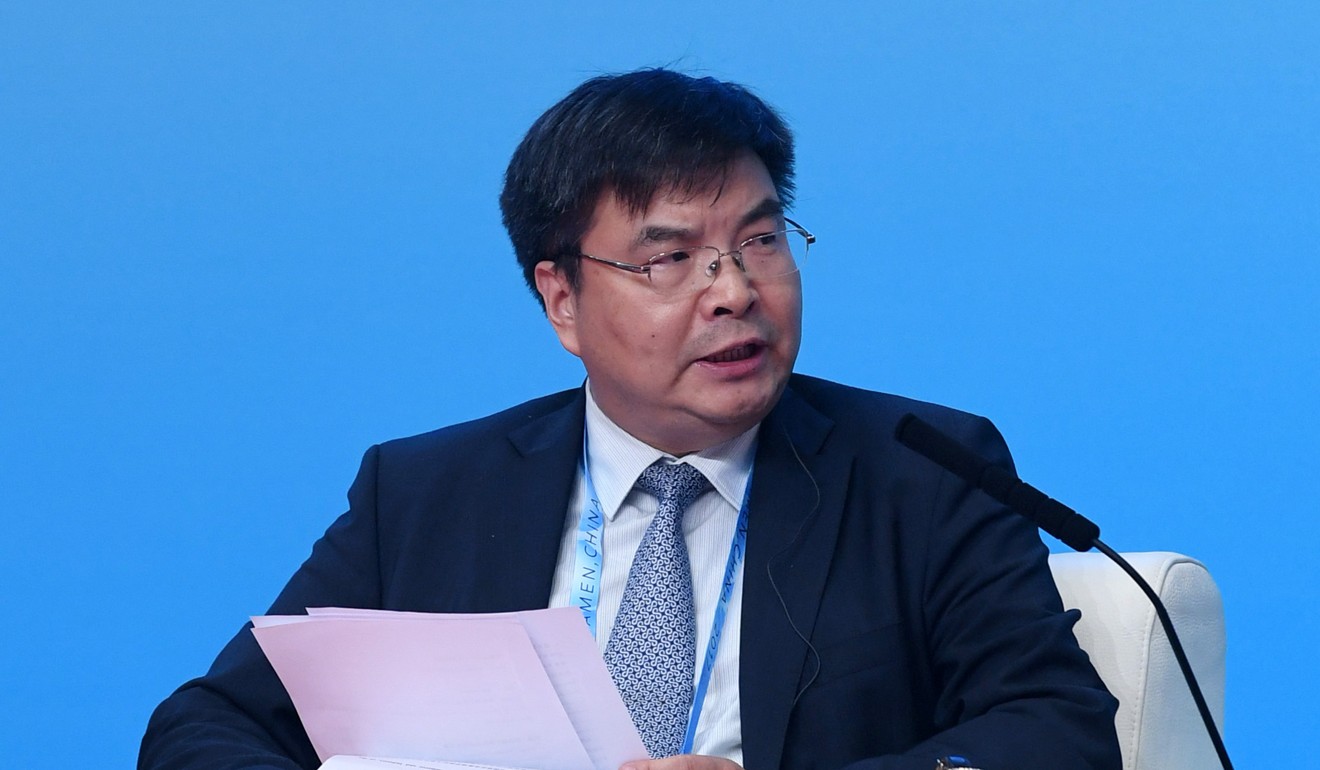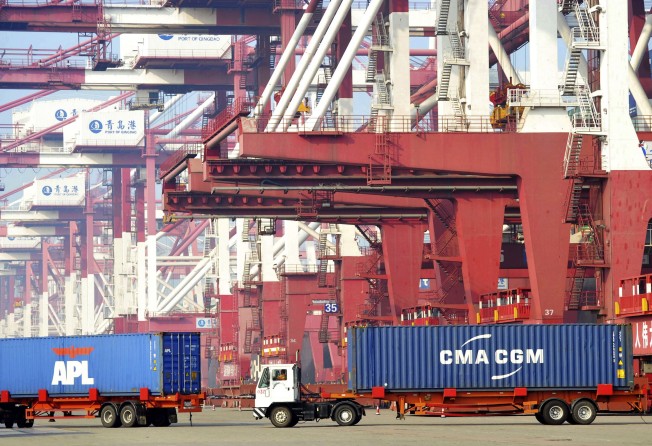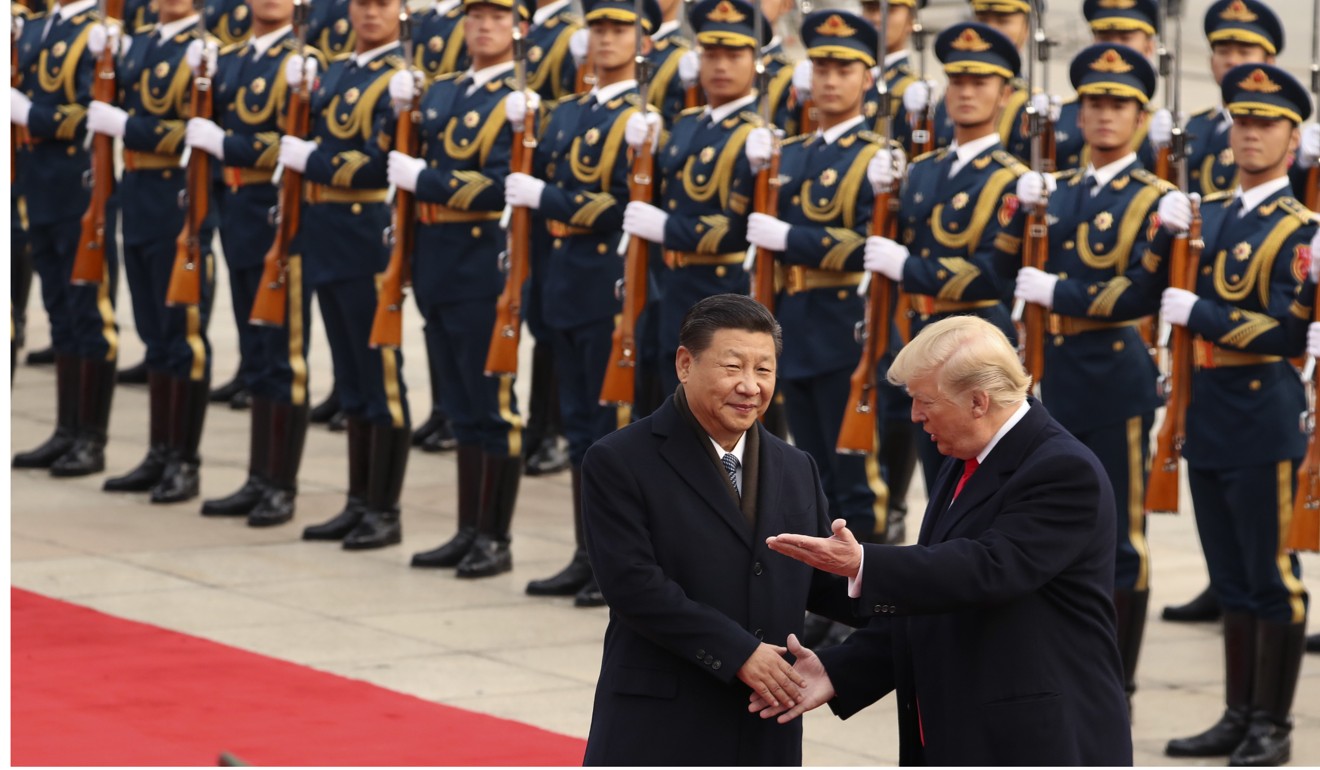
China is working on a new index to put a different spin on trade gap with US
Researchers from Beijing university developing ‘global value chain index’ claim skilled labourers in US could actually benefit from Chinese exports

China has teamed up with two world trade bodies on a new index to bolster Beijing’s arguments that it is not the biggest winner from its exports, and that benefits flow on to buyers.
The index of the global value chain is expected to be released next year and is meant to track how countries gain from being involved in different stages of the production process.
Work on the index is being led by a team from the University of International Business and Economics in Beijing, in collaboration with the World Trade Organisation (WTO) and the Organisation for Economic Cooperation and Development (OECD).
Researchers from the university this week released a report into who gains along the global chain of production and trade, claiming that skilled labourers in the United States could actually benefit from Chinese exports.
US President Donald Trump has long accused China of stealing American jobs through unfair trade practices and threatened punitive tariffs, and Friday’s announcement that China’s trade surplus with the US hit a record high last year – growing 8.6 per cent year on year to US$275.8 billion – is expected to add fuel to the flames.

Releasing the report at a seminar in Beijing on Monday, the university’s deputy chancellor Zhao Zhongxiu said Chinese exports could actually boost the US jobs market by creating employment in the areas of research and development, design and marketing.
“A fairly large proportion of China’s exports to the United States are semi-finished products. They are used by American companies to lower costs, improve sales and help boost their business and employment,” Zhao said.
He added that the team’s research had found that Chinese making semi-finished products for export were mainly low-skilled and low-paid workers, and these goods could then create job opportunities for skilled workers in the US.
Any loss of blue-collar jobs, Zhao said, could be offset by job creation in the service and hi-tech sectors provided the American labour market could adapt.

China has tried to ease tensions by making trade concessions, further opening up its financial markets and signing US$250 billion worth of deals with the US when Trump visited Beijing in November.
But at the seminar on Monday, former commerce minister Chen Deming said the trade gap was not that big if the distribution of gains along different stages of production was taken into account and if service trade was included.
“If the gap takes into account the global value chain perspective, it is only 48 to 56 per cent of the customs figures,” said Chen, who was involved in strategic economic dialogue with the US during the Barack Obama administration.
“Meanwhile, the global surplus in service trade is concentrated in the United States, which notched up US$250.6 billion for the sector in 2016, while China had the largest deficit of US$242.6 billion that year.”
Beijing has criticised Washington for its “zero-sum mentality” towards Sino-US trade after Washington launched an anti-dumping investigation into aluminium products, a probe into alleged Chinese theft of intellectual property, and rejected China’s market economy status at the WTO.
Trump is expected to roll out more specific trade barriers in his state of the union address on January 30, after labelling China as a “strategic competitor” in his national security strategy last month.
Sun Zhenyu, China’s first ambassador to the WTO, said the research into the global value chain, backed by key international institutions, could provide a valuable tool for Beijing as it is challenged by protectionism from across the Pacific.
“This gives China a very good theoretical basis for settling trade disputes and will add weight to our voice internationally,” he said.
“It shows that China is only somewhere in the middle or lower end [of the global value chain]” despite being the world’s second-largest economy and widely viewed as a major beneficiary of globalisation.